From
the marina in Capri, we took the hydrofoil (below) back to Sorrento in
time for a lovely sunset (with seagull) and a great dinner (that's not seagull!) at L'Abate ristorante.
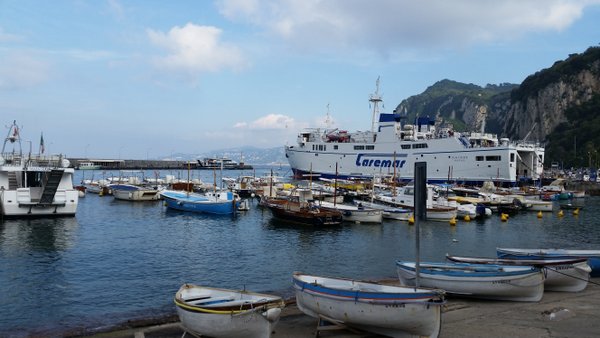
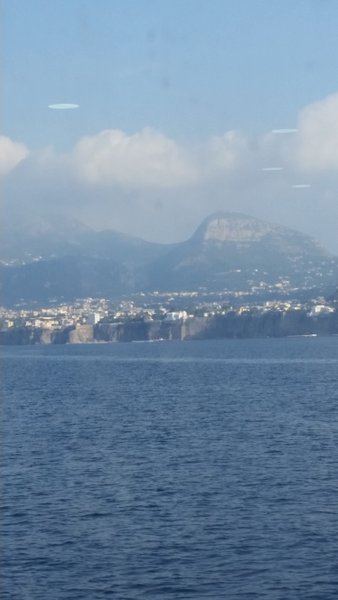
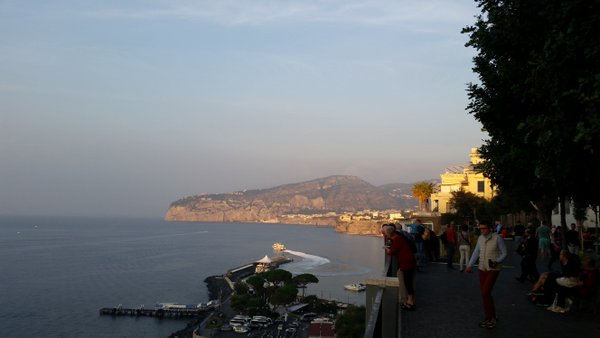
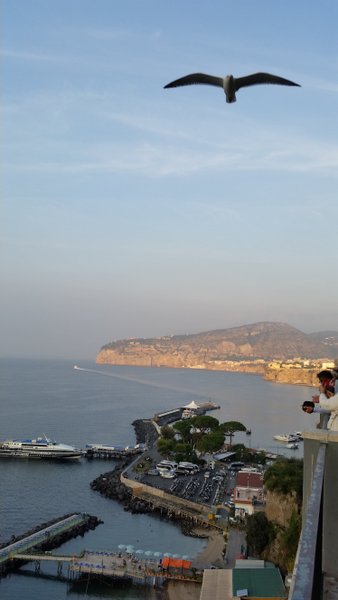
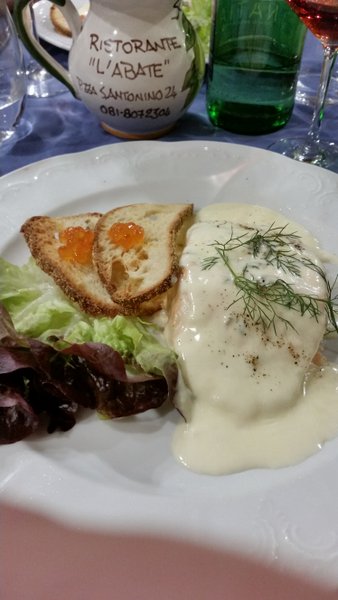
Next morning, we set off from Sorrento, crossed the peninsula, and took a breathtaking drive up a narrow winding highway along the rugged, gorgeous Amalfi Coast.
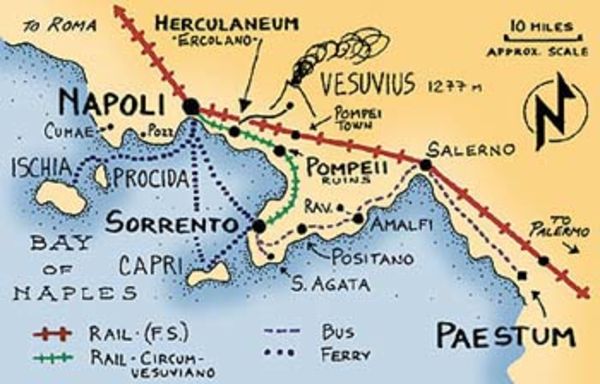
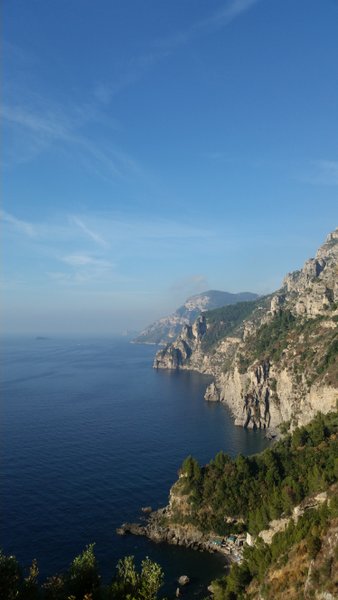
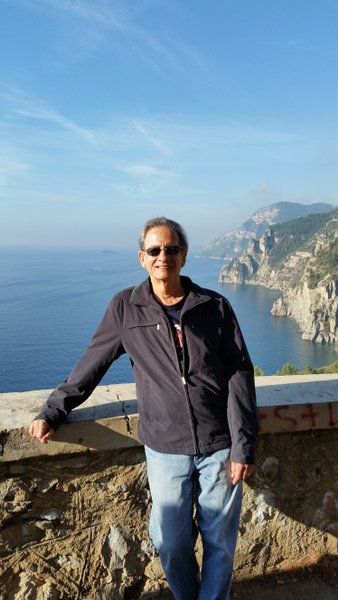
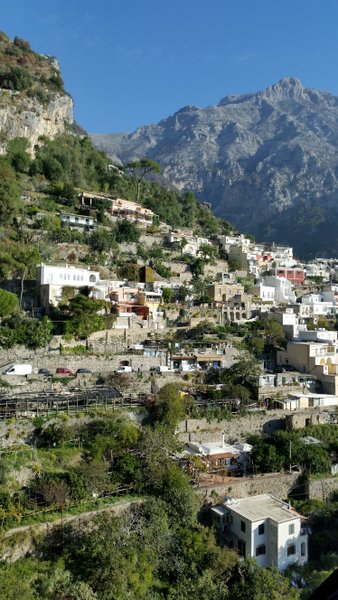
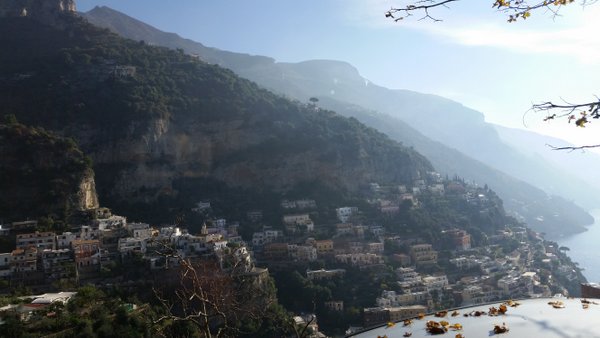
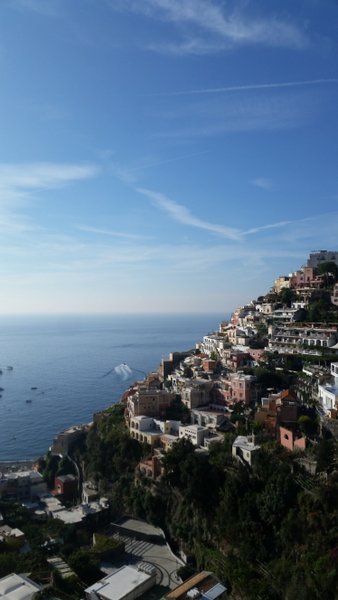
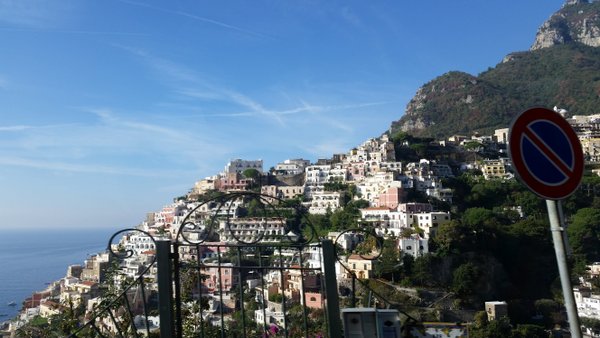
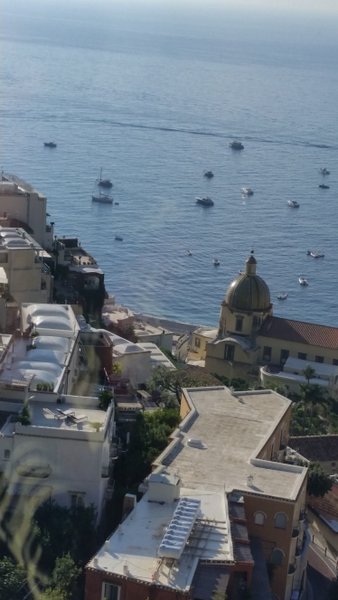
We stopped for some fresh fruit . . . .
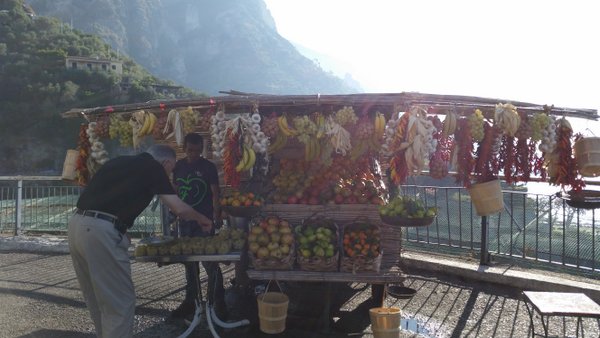
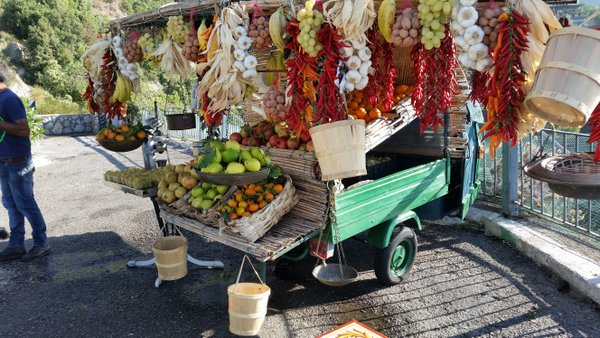
There's Gail at the railing near the fruit station, with Positano behind her. Gaetano was fond of pointing out that the cities built on the coastal cliffs of southern Italy expanded up, rather than out the way cities on plains or lowlands did.
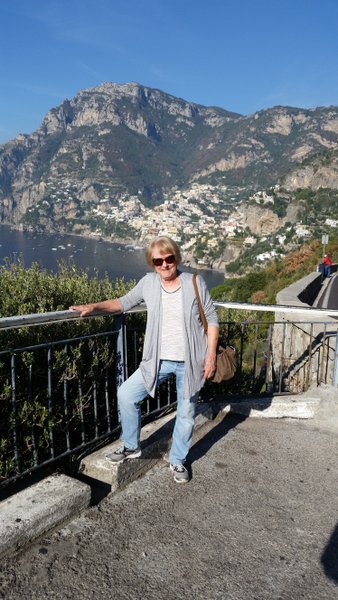
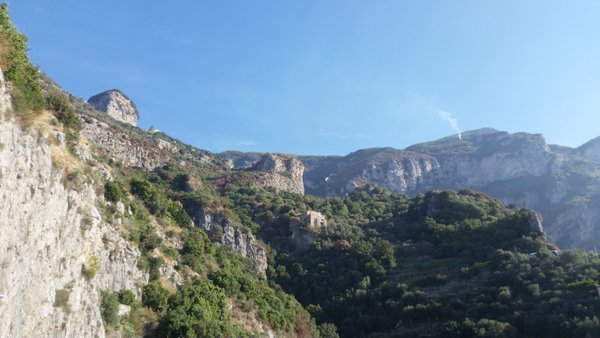
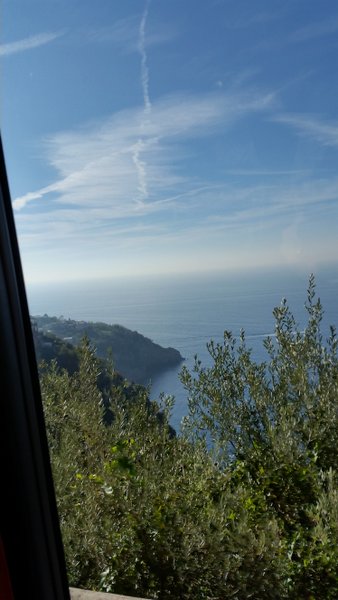
On the bus, as I stared out the window at the structure below, I wondered what it must have been like in ancient times to look out at the Tyrrenian Sea and feel very safe in your fortress, your panopticon. Somewhere out there Odysseus is said to have sailed through the sirens' lovely, luring, fatal songs.
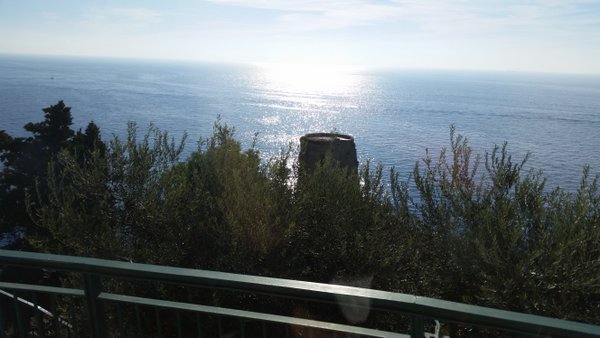
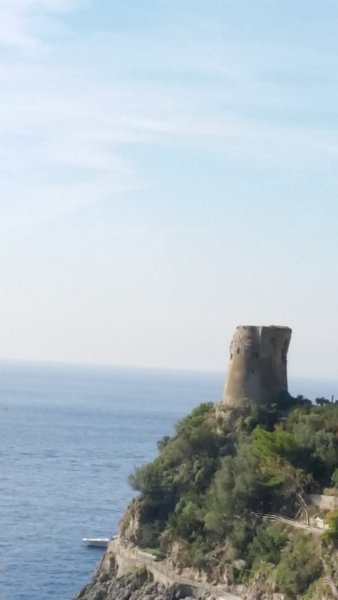
Below, a remarkable example of the phenomenon known as pareidolia. The rocks have naturally formed a Madonna! She appears to be holding a bouquet of foliage.
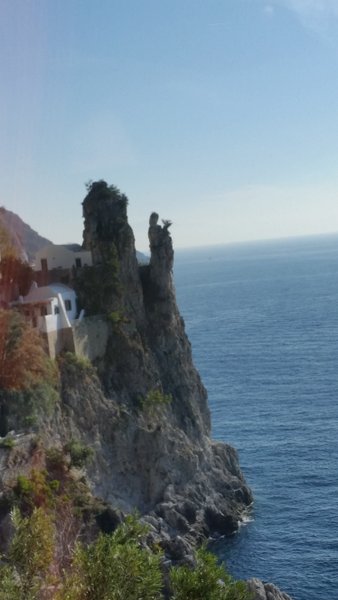
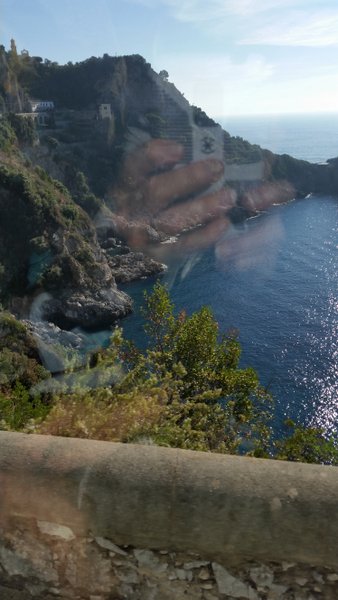
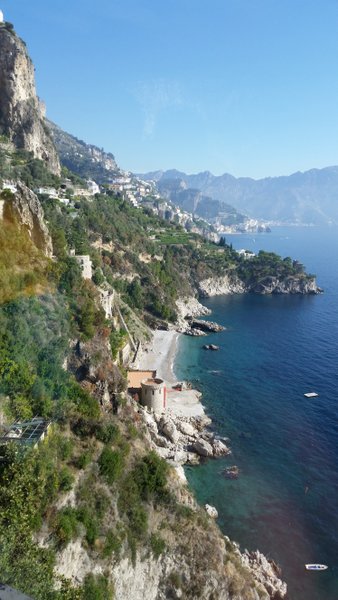
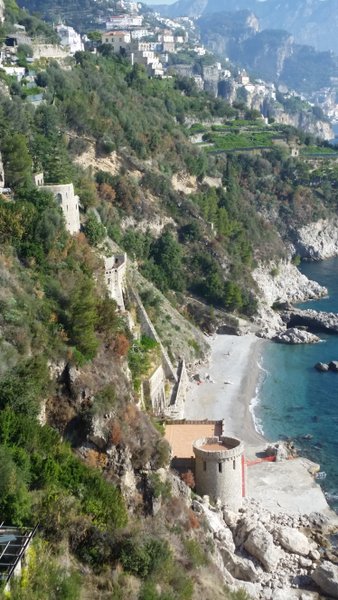

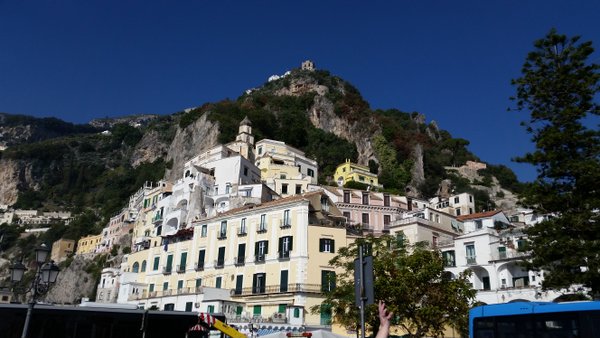
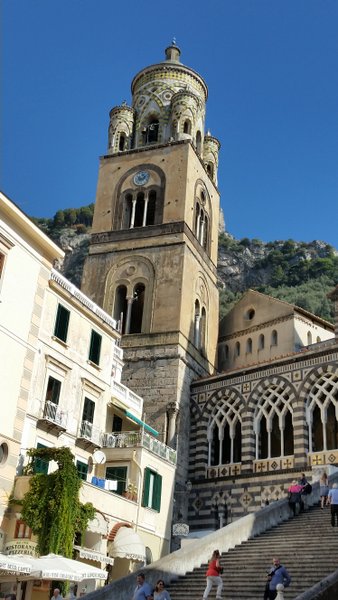
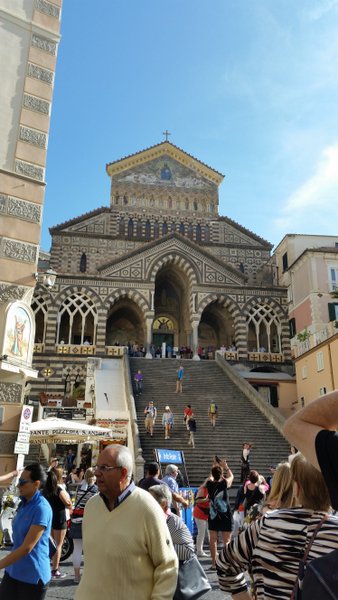
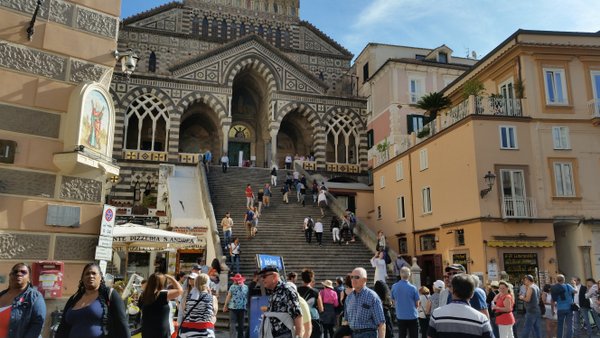
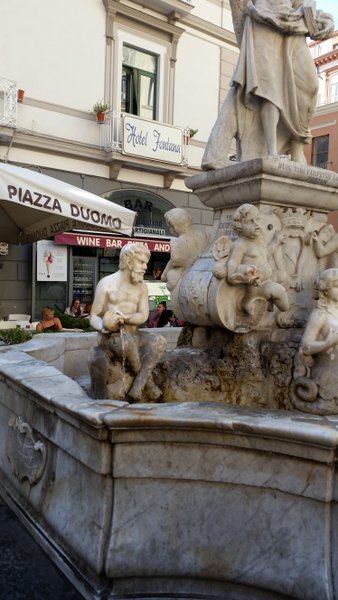
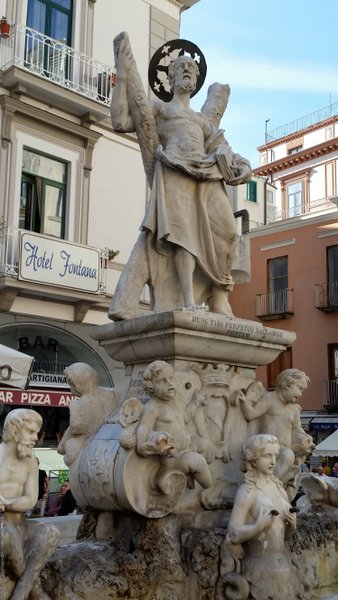
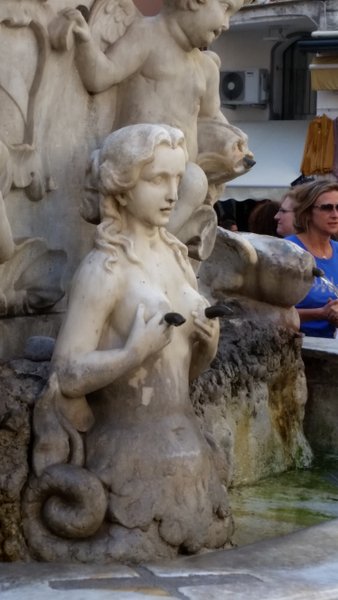
The processing of paper in Amalfi has been going on for centuries; it was first "learned by Amalfi merchants through trade relations with the Arabian world." (Throughout our tour Gaetano stressed the cross-cultural connections between Southern Italians and both the Middle East and the Balkans. The Tyrrenian, Ionian, and Adriatic Seas all were conduits of culture.)
In Amalfi, "The Valley of the Mills" still manufactures the unique paper--although the ancient industry is apparently in decline. Gaetano insisted that no visit to Amalfi, however short, would be complete without a stop at a paper shop. There it is below, La Scuderia del Duca, where we bought some cards, stationery, and Christmas ornaments, all made of Amalfi paper.
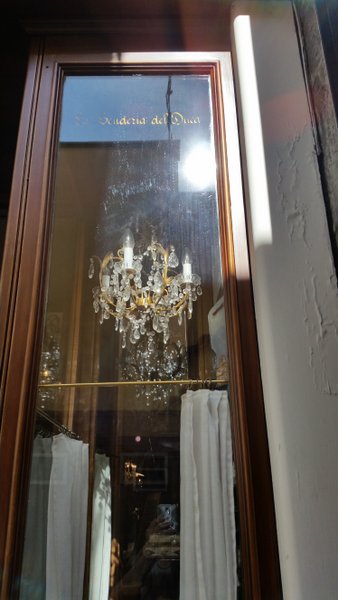
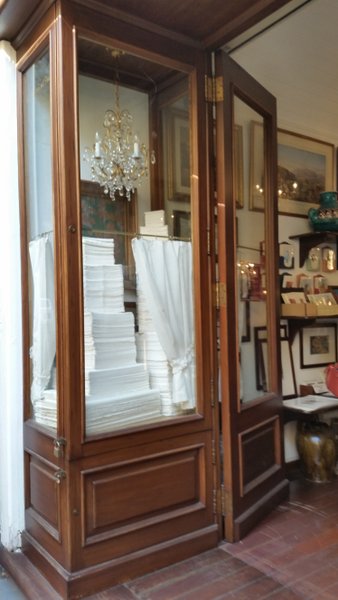
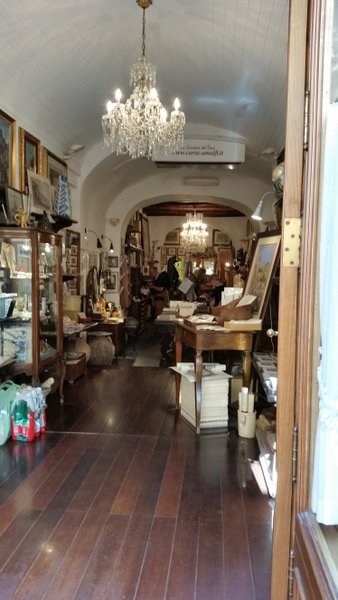
And then it was back to the bus . . . and back to Sorrento for our final afternoon and evening there.
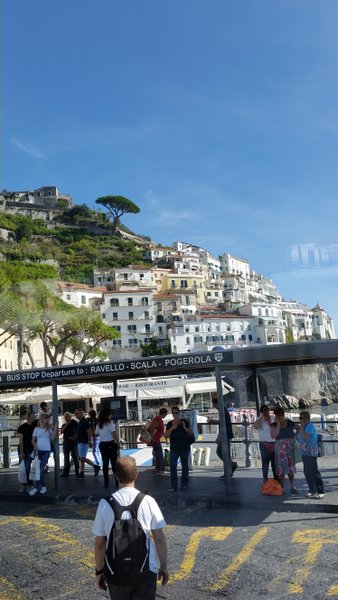





Next morning, we set off from Sorrento, crossed the peninsula, and took a breathtaking drive up a narrow winding highway along the rugged, gorgeous Amalfi Coast.





As we headed for the town of Amalfi, we passed the city of Positano
(below). As NatGeo Traveler puts it, "Viewed from afar, Positano is one
of Italy's most memorable little villages, thanks to its truly
magnificant position. . . . It is a medley of towering cliffs, the
vivid green of lemon trees, and the impossibly picturesque tumble of
pastel-colored houses falling steeply to the sea." The domed church is Santa Maria Assunta.



We stopped for some fresh fruit . . . .


There's Gail at the railing near the fruit station, with Positano behind her. Gaetano was fond of pointing out that the cities built on the coastal cliffs of southern Italy expanded up, rather than out the way cities on plains or lowlands did.



On the bus, as I stared out the window at the structure below, I wondered what it must have been like in ancient times to look out at the Tyrrenian Sea and feel very safe in your fortress, your panopticon. Somewhere out there Odysseus is said to have sailed through the sirens' lovely, luring, fatal songs.


Below, a remarkable example of the phenomenon known as pareidolia. The rocks have naturally formed a Madonna! She appears to be holding a bouquet of foliage.

In
the first pic below, I like the ghostly reflection (in the bus window)
of Gail's hand holding her phone-camera. Here we're approaching the
city of Almalfi . . .





.
. . where we had a brief but exhilarating time. In the first
picture below, we're just off the bus. From the marina, we spotted an
enviable abode on the cliff, majestic against the deep blue sky.
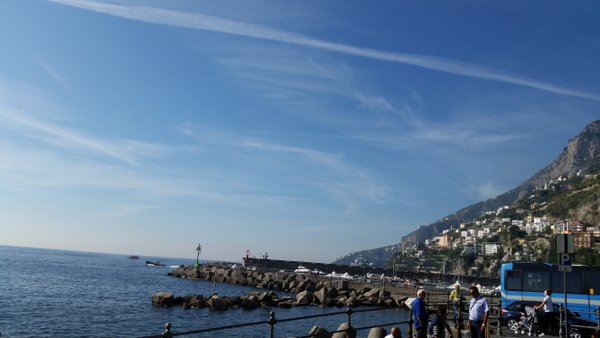
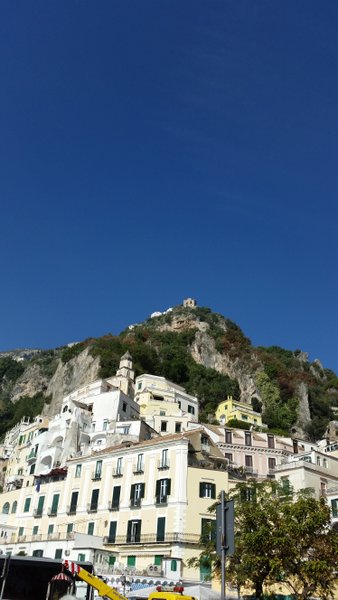
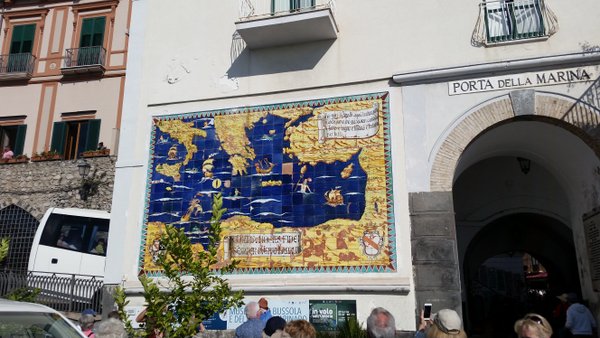
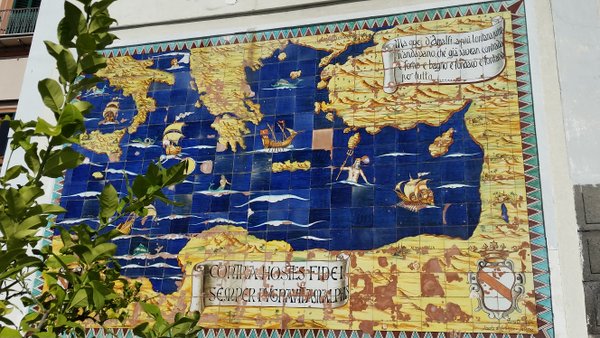
The Almalfi Cathedral
dates back to the ninth century, although it has been remodeled many
times since then, displaying not only Romanesque, but also Byzantine,
Gothic and Baroque elements.


Below, a large ceramic panel, a nautical map of the Mediterranean from the eleventh century, at the Porta della Marina.





Across
the piazza from the cathedral, a fountain fusing Christian and pagan
iconography. The statue is of Saint Andrew, whose relics are in the
cathedral. I'm not sure why his pedastal is adorned with nymphs and
satyrs.



The processing of paper in Amalfi has been going on for centuries; it was first "learned by Amalfi merchants through trade relations with the Arabian world." (Throughout our tour Gaetano stressed the cross-cultural connections between Southern Italians and both the Middle East and the Balkans. The Tyrrenian, Ionian, and Adriatic Seas all were conduits of culture.)
In Amalfi, "The Valley of the Mills" still manufactures the unique paper--although the ancient industry is apparently in decline. Gaetano insisted that no visit to Amalfi, however short, would be complete without a stop at a paper shop. There it is below, La Scuderia del Duca, where we bought some cards, stationery, and Christmas ornaments, all made of Amalfi paper.



And then it was back to the bus . . . and back to Sorrento for our final afternoon and evening there.

| Click Here for Part IX |